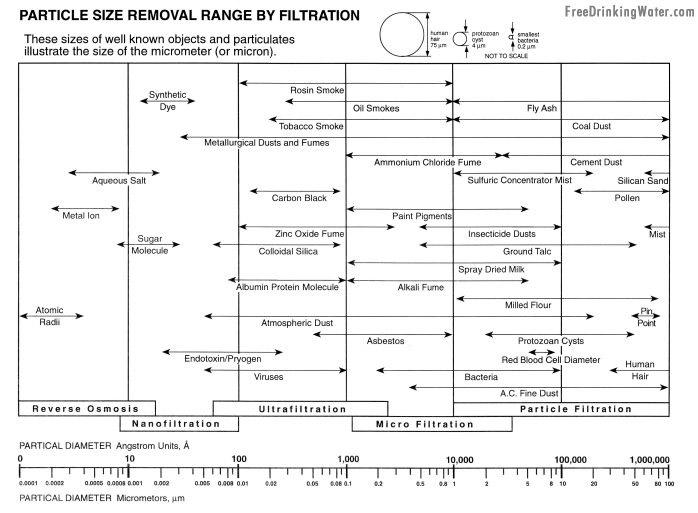
Water Purification Technologies - Pulling It All Together

Water Purification Systems
Because each purification technology removes a specific type of contaminant, none can be relied upon to remove all contaminants to the levels required for critical applications. A well-designed water purification system uses a combination of purification technologies to achieve final water quality.
Each of the purification technologies must be used in an appropriate sequence to optimize their particular removal capabilities. The schematic below shows a central laboratory water purification system designed to produce water for critical applications.
The first step is pretreatment equipment specifically designed to remove contaminants in the feed water. Pretreatment removes contaminants that may affect purification equipment located downstream, especially reverse osmosis (RO) systems. Examples of pretreatment are: carbon filters (or tanks) for chlorine removal, particulate filters for sediment/silt/particulate removal, and softening agents to remove minerals that cause "hard" water.

The next purification step is Reverse Osmosis (RO). RO removes 90 to 99% of all the contaminants found in water. It is the heart of any well-designed water purification system because it effectively removes a broad range of contaminants.
However, the tight porosity of the RO membrane limits its flow rate. Therefore, a storage container is used to collect water from the system and distribute it to other points-of-use such as polishing systems.
Polishing systems purify pretreated water, such as RO water, by removing trace levels of any residual contaminants. Polishing elevates the quality of pretreated water to "Type I" or "ultrapure" water.
A polishing system is designed to remove residual traces of impurities from water already pretreated by some other means (such as reverse osmosis or deionization). Treating raw tap water using such a system would quickly exhaust its capacity and affect final quality.
A typical polishing system may consist of activated carbon, mixed-bed deionization, organic scavenging mixtures, and 0.22 µm final filtration. Systems can also be enhanced with ultrafiltration, ultraviolet oxidation, or other features for use in specific applications.
This combination of purification technologies, combined with proper pretreatment, will produce water that is virtually free of ionic, organic, and microbial contamination.





